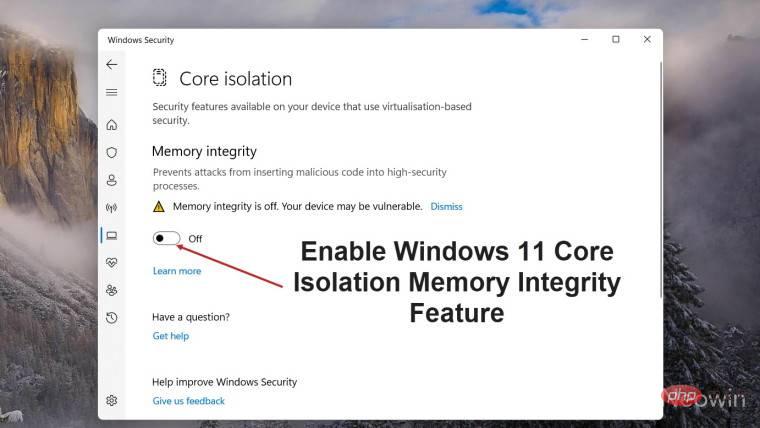 Backend Development
Backend Development C#.Net Tutorial
C#.Net Tutorial Sample code to implement minimum configuration for user login verification in ASP.NET Core
Sample code to implement minimum configuration for user login verification in ASP.NET CoreI recently encountered a requirement at work, which requires implementing a basic identity authentication in ASP.NET Core. The following article mainly introduces you to the minimum configuration for implementing user login verification in ASP.NET Core. Friends in need can refer to the information. Let’s take a look together.
Preface
This article mainly introduces the relevant content about the minimum configuration of ASP.NET Core user login verification, and shares it with you. Reference study, not much to say below, let’s take a look at the detailed introduction:
The background is to add a temporary login function to a project. You only need to verify whether the user is logged in. The minimum configuration required is the same as The implementation code is as follows.
The method is as follows:
Add the Authentication configuration in the ConfigureServices() method of Startup:
services.AddAuthentication(options =>
{
options.DefaultAuthenticateScheme = CookieAuthenticationDefaults.AuthenticationScheme;
options.DefaultChallengeScheme = CookieAuthenticationDefaults.AuthenticationScheme;
}).AddCookie();Add Authentication to the request pipeline in the Configure() method of Startup:
app.UseAuthentication();
After verifying the username/password in the login program, pass The following code generates a login cookie and sends it to the client:
var claimsIdentity = new ClaimsIdentity(new Claim[] { new Claim(ClaimTypes.Name, model.Email) }, "Basic");
var claimsPrincipal = new ClaimsPrincipal(claimsIdentity);
await HttpContext.SignInAsync(CookieAuthenticationDefaults.AuthenticationScheme,
claimsPrincipal);Summary
The above is the detailed content of Sample code to implement minimum configuration for user login verification in ASP.NET Core. For more information, please follow other related articles on the PHP Chinese website!
 如何在 Windows 11 中启用 Core Isolation 的内存完整性功能May 10, 2023 pm 11:49 PM
如何在 Windows 11 中启用 Core Isolation 的内存完整性功能May 10, 2023 pm 11:49 PMMicrosoft的Windows112022Update(22H2)默认启用CoreIsolation的内存完整性保护。但是,如果您运行的是旧版本的操作系统,例如Windows112022Update(22H1),则需要手动打开此功能。在Windows11中开启CoreIsolation的内存完整性功能对于不了解核心隔离的用户,这是一个安全过程,旨在通过将Windows上的基本核心活动隔离在内存中来保护它们免受恶意程序的侵害。该进程与内存完整性功能相结合,可确保
 电脑core是什么意思Sep 05, 2022 am 11:24 AM
电脑core是什么意思Sep 05, 2022 am 11:24 AM电脑中core有两种意思:1、核心,也即内核,是CPU最重要的组成部分,CPU所有的计算、接受存储命令、处理数据都由核心执行;2、酷睿,core是英特尔的处理器名称,酷睿是英特尔公司继奔腾处理器之后推出的处理器品牌,目前已经发布了十二代酷睿处理器。
 golang中如何验证输入是否为大写字母Jun 24, 2023 am 09:06 AM
golang中如何验证输入是否为大写字母Jun 24, 2023 am 09:06 AMGolang是一门高性能、现代化的编程语言,在日常开发中经常涉及到字符串的处理。其中,验证输入是否为大写字母是一个常见的需求。本文将介绍在Golang中如何验证输入是否为大写字母。方法一:使用unicode包Golang中的unicode包提供了一系列函数来判断字符的编码类型。对于大写字母,其对应的编码范围为65-90(十进制),因此我们可以使用unicod
 golang中如何验证输入是否为全角字符Jun 25, 2023 pm 02:03 PM
golang中如何验证输入是否为全角字符Jun 25, 2023 pm 02:03 PM在golang中,验证输入是否为全角字符需要用到Unicode编码和rune类型。Unicode编码是一种将字符集中的每个字符分配一个唯一的数字码位的字符编码标准,其中包含了全角字符和半角字符。而rune类型是golang中用于表示Unicode字符的类型。第一步,需要将输入转换为rune类型的切片。这可以通过使用golang的[]rune类型进行转换,例如
 PHP正则表达式验证特定字符串开头结尾的方法Jun 24, 2023 am 11:20 AM
PHP正则表达式验证特定字符串开头结尾的方法Jun 24, 2023 am 11:20 AMPHP是一种非常流行的编程语言,常用于Web开发。在PHP开发中,我们经常会遇到需要验证字符串的情况。其中,正则表达式是一种非常常用的方法。在对字符串进行验证时,我们经常需要验证字符串是否以特定字符或字符串开头或结尾。本文将介绍如何使用PHP正则表达式来验证字符串的开头或结尾。验证字符串开头在PHP中,通过正则表达式验证字符串开头,我们可以使用"^"符号来表
 golang中如何验证输入是否全部为中文字符Jun 24, 2023 am 09:16 AM
golang中如何验证输入是否全部为中文字符Jun 24, 2023 am 09:16 AM随着时代的发展,我们越来越注重对数据的校验,特别是对用户输入的校验。对于语言类的校验,如何准确判定输入是否全部为中文字符成为了一个重要问题。而在golang中,我们可以借助unicode包和regexp包来实现这一需求。一、unicode包unicode包提供了一系列对于unicode的核心支持。我们可以使用这个包中的函数来准确地判断一个字符是否为中文字符。
![如何修复 Windows 11 / 10 中的处理器热跳闸错误 [修复]](https://img.php.cn/upload/article/000/000/164/168169038621890.png) 如何修复 Windows 11 / 10 中的处理器热跳闸错误 [修复]Apr 17, 2023 am 08:13 AM
如何修复 Windows 11 / 10 中的处理器热跳闸错误 [修复]Apr 17, 2023 am 08:13 AM大多数设备(例如笔记本电脑和台式机)长期被年轻游戏玩家和编码人员频繁使用。由于应用程序过载,系统有时会挂起。这使用户被迫关闭他们的系统。这主要发生在安装和玩重度游戏的玩家身上。当系统在强制关闭后尝试启动时,它会在黑屏上抛出一个错误,如下所示:以下是在此引导期间检测到的警告。这些可以在事件日志页面的设置中查看。警告:处理器热跳闸。按任意键继续。..当台式机或笔记本电脑的处理器温度超过其阈值温度时,总是会抛出这些类型的警告消息。下面列出了在Windows系统上发生这种情况的原因。许多繁重的应用程序在
 在PHP中使用Google reCAPTCHA进行验证Jun 19, 2023 pm 05:38 PM
在PHP中使用Google reCAPTCHA进行验证Jun 19, 2023 pm 05:38 PM在现代网络世界中,网站的安全性以及用户隐私的保护越来越成为重要话题。其中,人机验证这一技术方法已经成为防范恶意攻击行为的不可或缺的方式之一。GooglereCAPTCHA,是一个被广泛应用于人机验证的工具,其概念已经深入人心,甚至在我们每天使用的许多网站上都能够看到其存在的身影。在本文中,我们将探讨如何在PHP中使用GooglereCAPTCHA进行验证


Hot AI Tools

Undresser.AI Undress
AI-powered app for creating realistic nude photos

AI Clothes Remover
Online AI tool for removing clothes from photos.

Undress AI Tool
Undress images for free

Clothoff.io
AI clothes remover

AI Hentai Generator
Generate AI Hentai for free.

Hot Article

Hot Tools

Safe Exam Browser
Safe Exam Browser is a secure browser environment for taking online exams securely. This software turns any computer into a secure workstation. It controls access to any utility and prevents students from using unauthorized resources.

ZendStudio 13.5.1 Mac
Powerful PHP integrated development environment

SublimeText3 English version
Recommended: Win version, supports code prompts!

Zend Studio 13.0.1
Powerful PHP integrated development environment

Dreamweaver CS6
Visual web development tools





